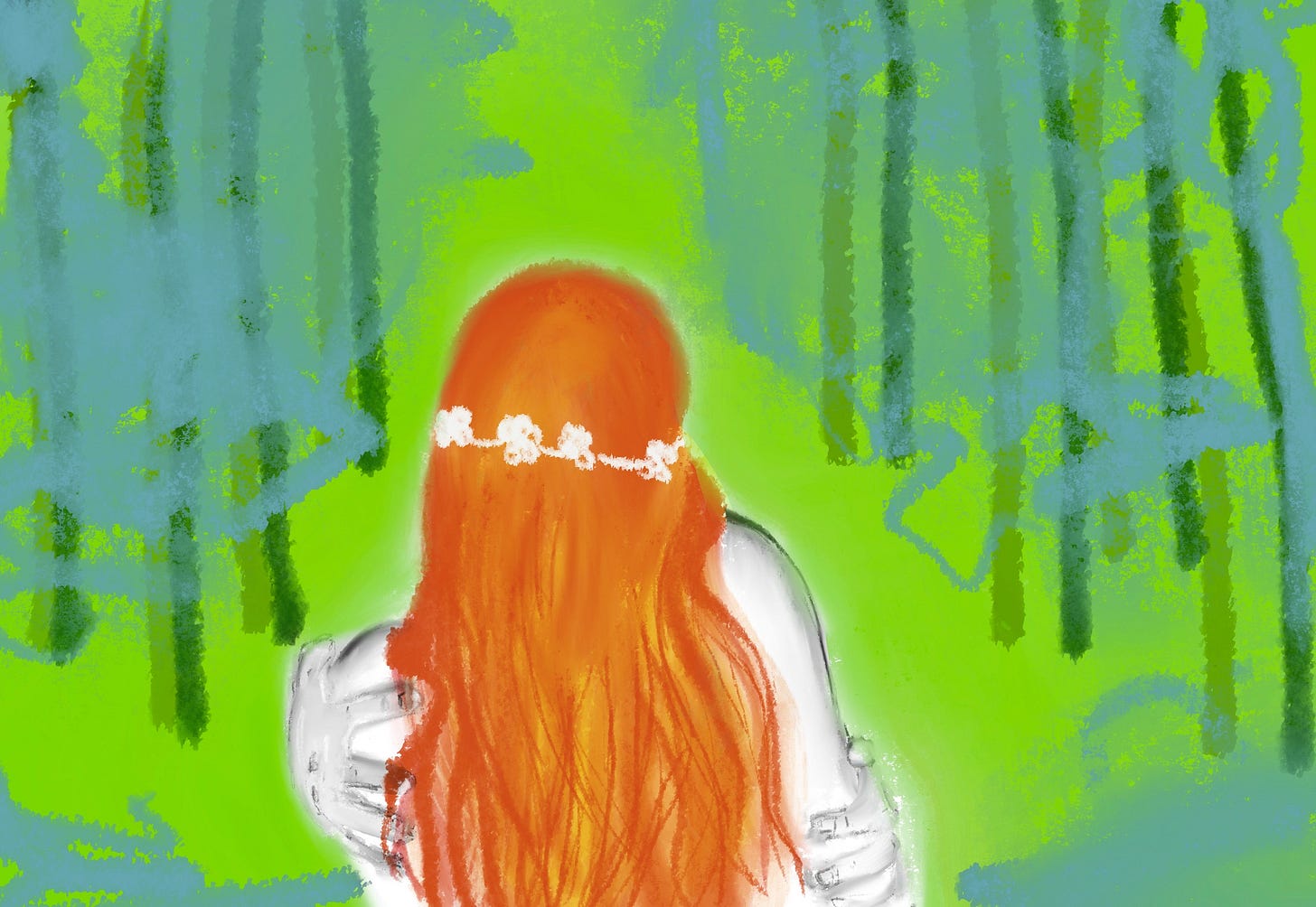I Felt My Life With Both My Hands To See If It Was There
Our "Writing Toward Pleasure" pleasure adventure takes us into the strange pleasures of aloneness as a portal between self, world, and page. Write with us!
How do you feel about aloneness? Is it a pleasure for you?
Is it uncomfortable, or painful?
Is it a little of both?
Humans vary widely in the way we experience and relate to solitude, in the way we feel inside of aloneness. Certainly those differences came into stark relief during the quarantine era of the Covid-19 pandemic. I know quarantine was easier for me—a person who loves being at home and thrives with plenty of solitude—than it was for my husband, a person who loves being out in the world and who thrives in the company of others.
But however we relate to solitude (and by the way, I believe this is a question that goes far beyond the labels of introvert or extrovert), we must still contend with the truth of our essential aloneness.
The first time I heard anyone articulate this truth, I was still in my twenties, a young mother navigating a lonely marriage while also gasping for breath in the pounding waves of my past. And while I don’t recall the occasion or the context of the conversation with my mother-in-law, I do recall very vividly what she said, which was that one of the great sorrows in life, for her—though she meant for all of us—was this immutable, absolute aloneness, an aloneness that she described to me as resolute and unrelated to how close we are to the people we love, unrelated to how known we might or might not feel. At the end of the day, my mother-in-law said—and by this she meant, at end of our lives, and to a certain extent, throughout our lives—we are inextricably alone with ourselves.
What does this mean for us as artists?
While I am not a subscriber to what I call “the myth of the lone creative,” it does seem to me that as artists, and perhaps especially as writers—though this may be equally true for other disciplines, I’m not sure—aloneness, and our relationship to aloneness, is fundamental to our work. Not to say we can only work in solitude, or that our lives must be some kind of Walden Pond in order to create. I don’t believe that. All my adult life, I have written inside of the chaos of family life, sometimes quite literally at the dining table with children and teenagers and dogs and friends running in and out, living their noisy lives all around me.
I do not need a quiet, controlled, solitary environment in which to work.
But I do need a vibrant relationship, or at least a real relationship, with myself inside of my own aloneness.
Many artists have exemplified the path of art as a product of aloneness. Perhaps most famously, Emily Dickenson. In her lovely essay in Psyche1 about Emily Dickenson’s solitude, Magdalena Ostas writes:
Through the 1850s, Dickinson gradually settled into a solitary existence, rarely leaving the Homestead and its parameters, and deliberately sequestered from others: ‘I do not cross my Father’s ground to any House or town,’ she announced in a letter in 1869. We know that she took enormous pleasure in reclusive activities around the property: gardening, cooking, reading, writing, and sewing booklets of verse. In her later years, she retreated increasingly to her room. This full withdrawal into the space of the home, unexpectedly, opened possibilities, for she thrived, and began to develop her distinctive poetic style….
Although some of her biographers, among them John Cody and Albert Gelpi, see a lack at the centre of her existence, Dickinson’s profound isolation granted her perspectives – ranging from the mystical to the ruminative to the critical – that daily social living might have cut off. Isolation proved a guard against rigid social expectations, especially those imposed on women, which would likely have restrained her poetic craft. Alone with herself, and her boundless creative explorations, she found a world in inner space.
Ostas concludes her essay by describing aloneness in one of the most beautiful ways I’ve heard—this idea of tracing and retracing our own borders:
We learn from Dickinson that self-encounter can generate both creative energy and art. At a time when we’ve endured so much social distance, dwelled inwardly with ourselves, tracing and retracing our own borders, such lessons are nothing trivial.
Tracing and retracing our own borders. It’s such a powerful image. I remember actually doing an exercise like this during my Waldorf teacher training. We were put into pairs, then instructed to take turns lying down on a long piece of butcher paper so that our partner could trace our body. What came next, if I recall correctly, had something to do with filling in the outline with the detritus of our inner lives.
Perhaps it’s an exercise I should try again—literally and figuratively, that is. Maybe we all should.
Tracing and retracing our own borders.
Of course, Emily Dickenson is not the only artist who cultivated a life of solitude, and certainly many artists explore solitude—their own and the concept in general—through their art.
One of the most brilliant poets of our time, Diane Seuss, has plumbed the depths of this topic from many angles. Today, we’ll look at one of her poems that celebrates solitude as a particularly delicious pleasure.
I’m excited to get under the skin of Seuss’s poem together with you, and to write in response to it, through the lens of pleasure!






